
Snow Bros. Arcade
Snow Bros.
Platform: Arcade
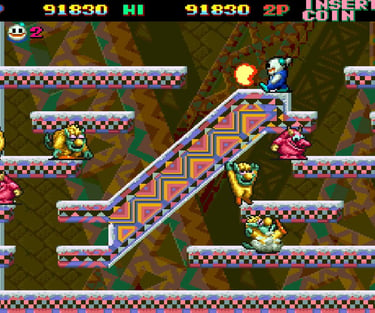


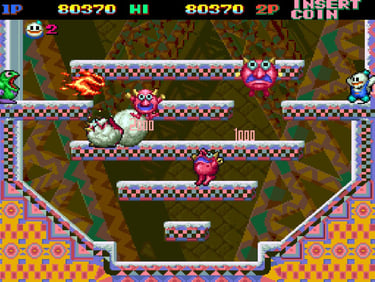
In theory, getting to the top and working down is the best strategy. However, actually getting to the top without dying is another matter entirely.
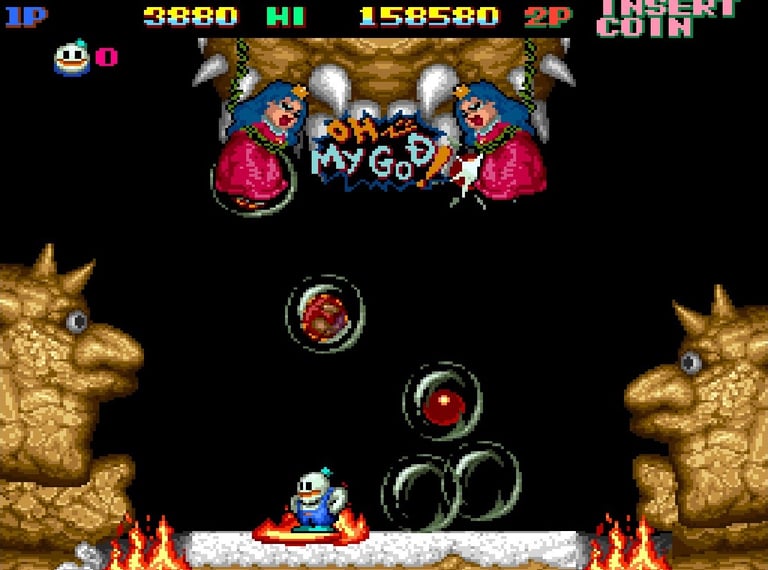

The brutal bosses can instill the fear of god...as seen with the poor hanging ladies screeching from above.
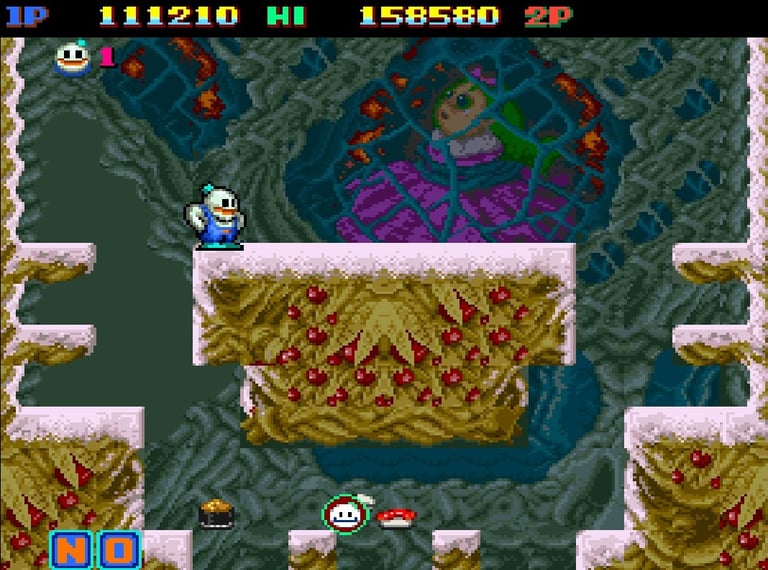

The artwork is good, if a bit weird. Is that really one of the princesses bound and waiting in the background? Does anyone know?
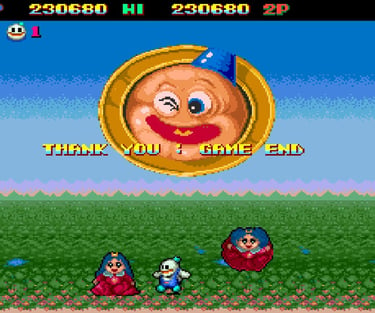

Spoiler! The game's ending is the only suggestion of a narrative. Unlike the console versions, no context is ever given regarding just who these curious characters really are.
The single-screen platformer is something of a lost genre. Although an outgrowth of “get-to-the-top” games like Donkey Kong, it’s more commonly associated with Bubble Bobble in which a character hops around an enclosed stage of platforms and obstacles, striving to eliminate every enemy. It’s a simple but addictive formula—so much so, the genre enjoyed a brief renaissance in the latter ‘80s/early ‘90s before fading into almost complete obscurity.
But if Bubble Bobble established the template’s rules, Snow Bros. showed how to best express them; this was a game that knew how to use the limits of a non-scrolling screen to its utmost kinetic benefit. Indeed, the game’s pudgy heroes, Nick and Tom, are snowmen packed with a specific power—by tossing a barrage of frosty shots, they can crunch their foes into snowballs and then kick them into other baddies. The goal is to nail as many enemies as possible in a single roll, netting powerups and bigger point combos in the process. It’s like a dynamic kind of bowling in which skilled players can trigger some ingenious domino-style frenzies by having one ball strike another that then strikes another…filling the screen with a kind of ricocheting, Rube Goldberg-style blitzkrieg that bulldozes everything. It’s quite satisfying.
When it works. Perhaps the victim of the typical “quarter muncher” mandate that has always pervaded arcade design, Snow Bros. is a difficult game. Players will struggle just to survive in the later levels, let alone devise clever chain-reactive traps. This is due to a pronounced lack of speed; the snowmen move incredibly slow, needing the “speed up” powerup to truly stand a chance against the much swifter foes. This speed boost should have been Nick and Tom’s default acceleration, not just because it softens the challenge, but because it lends the proceedings more energy. And thus, more fun.
But unfair level design is the truer concern. Some stages are intentionally designed to trap the player, giving him no way to leap out of the well of walls he’s fallen between. Unless an enemy drops in and can be used as a snowball stepping stone to escape, the player is stuck—and probably dead, as each level has a strict time limit. It’s a cheap tactic. A nasty trick. A stain on the game that makes it feel slightly broken.
Evening the odds somewhat, however, is the game’s best way to play—a co-op mode that allows a pair of players to tackle the 50 arduous floors together. Armed with a buddy, the proceedings feel more natural, more optimized, and is likely why Snow Bros. remains so fondly remembered when other games of the era have long since been forgotten. So, for those loners experiencing this gem through emulation, keep this fact in mind before declaring judgment.
In many ways, Snow Bros. is the quintessential example of the genre. It’s been outright copied far more than its Bubble Bobble forefather, seeing semi-clones in Tumble Pop, Joe and Mac Returns, Nightmare in the Dark, and who knows how many more. And there’s a reason for that. It’s an endearing experience with decent graphics and great mechanics, plus some surprisingly catchy music.
But more than an arcade experience, it’s an excellent console choice, with fine ports gracing the Mega Drive and NES, plus an interesting remake on the Nintendo Switch. It’s an arcade game whose legacy will, ironically, survive or die through the home console.
Here's hoping for the former.--D
Publisher: Toaplan/Romstar
Developer: Toaplan
Release: May 1990
Genre: Single-screen Platformer
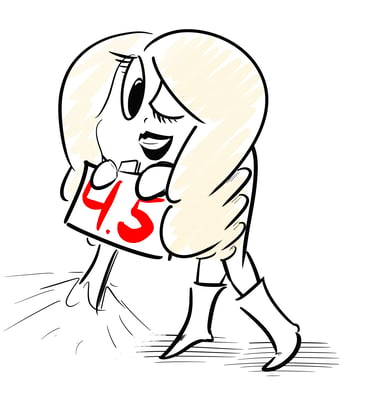

Contact: lostnostalgiaproductions@gmail.com
Website: www.lostnostalgia.com
Like what we're doing? Please consider throwing us a dollar into our Patreon page's tip jar!


